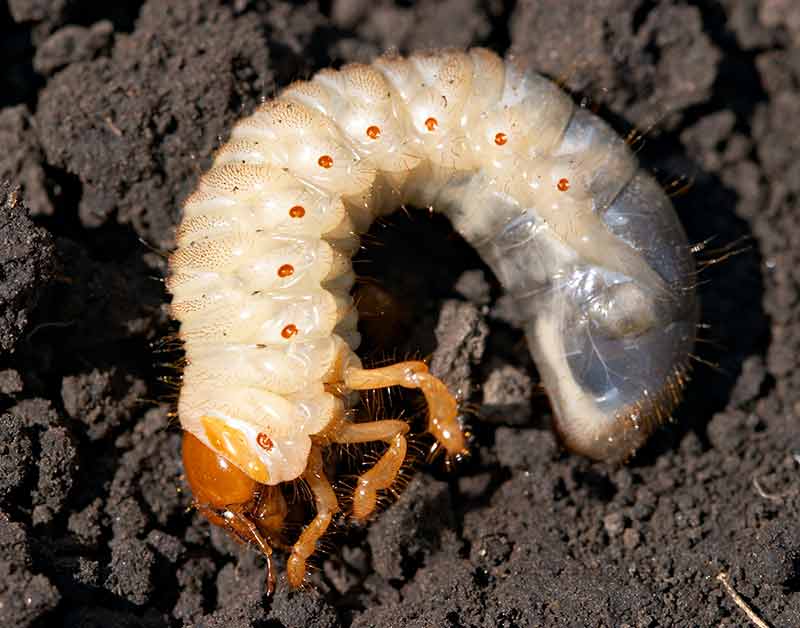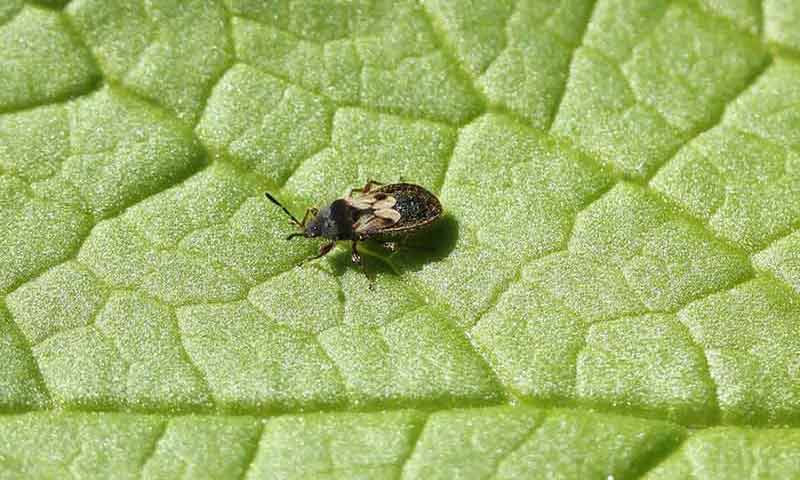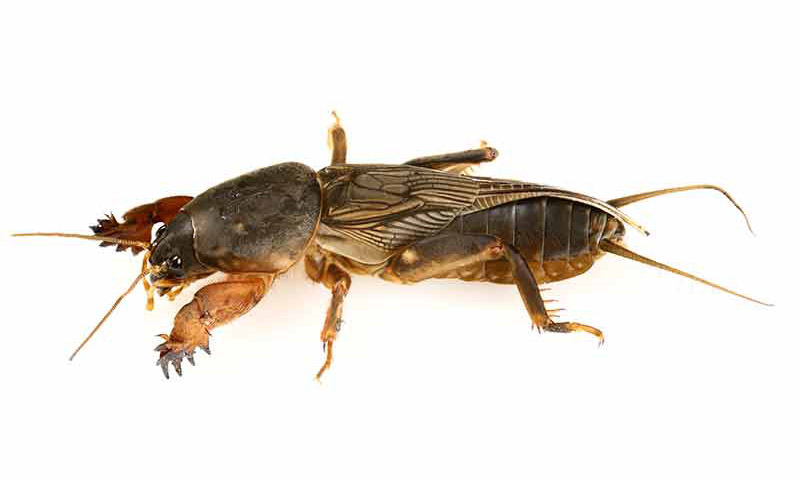Why Does My Lawn Have Brown Spots?
Brown lawns spots can be frustrating, especially when you've invested your time and aspirations in a beautiful carpet of lush, green grass. But don't worry. You can take care of brown lawn spots and have them disappear as fast as they came. Reclaiming your lawn starts with a little detective work to determine who or what is to blame:
- Dog Spots or Damage
- Overdue Lawn Maintenance
- Grubs (and Beetles)
- Chinch Bugs
- Billbugs
- Mole Crickets
- Spot Repair and Prevention

Dog urine can cause brown spots in lawns.
Dog Spots or Damage
If your family includes a dog, you may have dog urine spots or digging damage in your yard. When dogs visit the same spot day after day, the concentrated urine acts like fertilizer burn or street de-icing salts. It kills grass and leaves brown spots behind. If the locations of your brown spots line up with Fido's favorite hangouts, you can stop your search right there.
Overdue Lawn Maintenance
When busy schedules put lawn care tasks on hold, brown spots inevitably show up. Over time, lawns can develop excess thatch buildup that acts like a barrier at the soil line. A similar thing happens when lawn aeration for compacted soil is overdue. Water, nutrients and oxygen can't move normally. Fungal lawn diseases — marked by brown spots — come next. If this sounds like your lawn, the solution starts with good seasonal lawn maintenance.

Lawn-damaging grubs eat and sever grass roots.
Grubs (and Beetles)
Grubs are destructive pests that feed on grass roots. Patches of yellow dying grass and brown dead grass usually peak in spring and fall. Grubs are the larval stage of beetles, including Japanese beetles, which continue garden destruction as adults. Grub-damaged brown spots feel spongy underfoot. With heavy infestations, damaged sod rolls back like a rug. You'll see severed grass roots and soft, plump gray-white grubs curled into C-shapes about 1 inch long. You may also find your lawn disrupted by skunks, raccoons, birds and other critters after grub meals.

Spot-causing chinch bugs are easily recognizable.
Photo credit 2-5: Even Dankowicz, CC BY 4.0
Chinch Bugs
Chinch bugs damage grass by sucking out plant juices and blocking the grass' vascular system. Unable to take up water or nutrients, grass dies — and leaves brown lawn spots behind. Chinch bug damage is often mistaken for drought during hot summer weather, but irrigation won't bring grass back. Chinch bugs are less than 1/4 inch long, but a magnifying glass helps track them down in your lawn's thatch layer. You can't mistake the distinctive black-and-white hourglass shape on chinch bug backs.

Billbugs have long, bill-like snouts.
Photo credit: Fyn Kynd (CC BY 2.0)
Billbugs
Like grubs and beetles, billbugs damage lawns as larvae and adults. You'll recognize these brown or black weevils by their long, curved snouts. Adult billbugs lay eggs inside grass blades; hatching larvae eat their way out. Brown lawn spots appear in early summer and spread, and are often mistaken for drought. Tug on billbug-infested grass and it breaks off at the base. Powdery excrement that looks like sawdust gives them away. Get a closer look at roots and you'll find grub-like larvae. Unlike beetle grubs, billbug larvae are legless.

Mole crickets damage grass by tunneling and eating roots.
Mole Crickets
Early spring brings plenty of mole cricket activity, but damage peaks during summer. Like moles, mole crickets damage grass by tunneling and disrupting grass roots. Some feed on roots and shoots, too. In late summer and fall, spots of dead brown grass appear. Mole crickets are memorable: Their cricket-like bodies have crustacean-like heads and mole-like claws. If you see adult mole crickets in your yard in spring, their nymph offspring will bring brown lawn spots by fall.

Lax lawn care can set grass up for fungal diseases and brown spots.
Photo credit: William M. Brown Jr., Bugwood.org (CC BY 3.0 US)
Spot Repair and Prevention
After you identify the culprit behind your lawn spots, the next step is easy. Sevin Insect Killer Lawn Granules kills these four pests and more than 100 other insects. Then they keep protecting your grass for up to three months. Use a regular lawn spreader to apply the granules to your entire lawn — the brown spots and areas where damage isn't showing yet. Then water immediately to release the active ingredient and reach pests above and below ground. Next year, do the same to prevent lawn damage before it begins.
Get brown spots back to green quickly with Pennington bare spot repair mixtures. With premium Pennington Smart Patch II bare spot repair products, you get water-conserving Smart Seed grasses, professional-grade fertilizer and mulch in Sun & Shade, Dense Shade, Tall Fescue, Bermudagrass and Zenith Zoysia mixes.
Beneficial microbials in Pennington Smart Patch work to improve soil and grass health, deliver lush grass fast, and help prevent lawn disease and bare spots — whatever the cause. Plus, a tackifier in Smart Patch acts as a blanket to keep seed where you put it, even in rain on erosion-prone slopes and hills. Whether your spots trace back to your beloved pooch or destructive grass-damaging insects, you'll see new seedlings in as little as five days and see full results in just two to three weeks, depending on your Smart Patch product.
With a helping hand from Pennington and Sevin brands, you can keep your lawn lush, healthy, green and spot-free. We want to help you grow the lawn you've dreamed of — and make brown lawn spots distant memories.
Always read product labels thoroughly and follow instructions.




